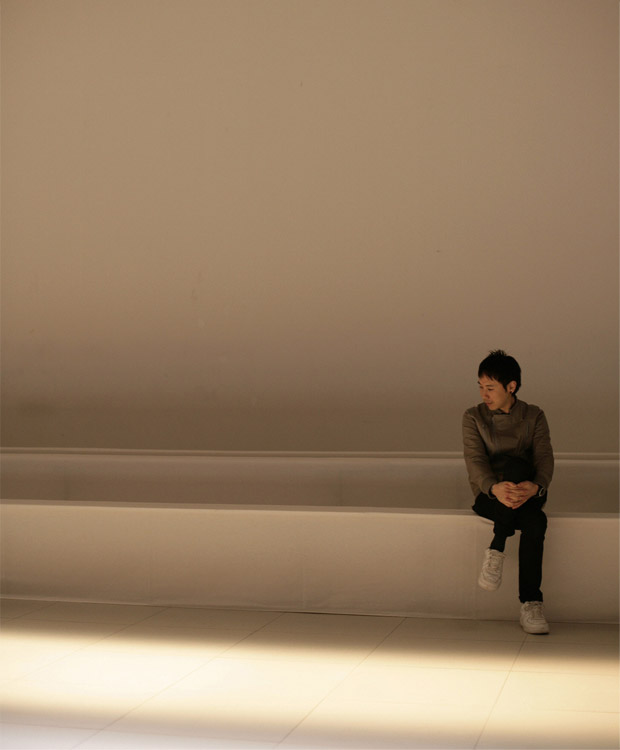An old rock quip has it that only a few thousand people bought The Velvet Underground’s first record, but every one went out and formed a band. (It’s most often attributed to Brian Eno, but as it turns out, it’s apocryphal.) But you could say something similar about Seditionaries, the fashion line punk impresarios Malcolm McLaren and Vivienne Westwood created and sold out of their King’s Road shop in the seventies. For aspiring punks and aspiring designers both, Seditionaries was hugely influential. Its admirers and adherents were often moved to design punk garb of their own, and few were moved more than Jun Takahashi, who absorbed the lessons of the line and used them to create his own cult label, Undercover.
Takahashi and his friend and collaborator, Hiroshi Fujiwara, also scoured Tokyo for vintage Seditionaries pieces, eventually amassing a collection impressive enough that they published it as a limited-edition book (emphasis on limited). Here, Takahashi speaks with Style.com about punk rock and punk fashion and his enduring love of Westwood and McLaren’s creations, and also shares a few glimpses between the covers of the impossible-to-find Seditionaries book.
Tell me a little bit about your early experiences with punk music as a teenager and a young man in Tokyo. What does punk mean to you? Has that meaning changed over time?
I encountered punk rock in my early teens. To me, punk means a spirit unrestrained by conventional ideas, a spirit of rebelliousness, nihilism…things like that. I think it is a very humane way of thinking and living. This meaning hasn’t changed at all as I get older.
Vivienne Westwood and Malcolm McLaren’s line Seditionaries had a lot to do with establishing the punk look as we now know it, and I know it has had a strong influence on you. You’ve said in the past it was one of the collections that inspired you to begin making womenswear, and you and Hiroshi Fujiwara gathered your collection of Seditionaries pieces to make a book that’s now a sought-after rarity. What spoke to you about the Seditionaries collection when you first encountered it? What did it do differently from other fashion collections?
Until I encountered the genuine Seditionaries, I had thought punk fashion was just destructive, but when I looked at the clothes of the real Seditionaries, I had a tremendous shock, because they were very elegant and sophisticated. Still, destructive and erotic elements were merged in a sophisticated way. It was soul-shaking, because these conflicting elements fused together and came into existence in an exquisite balance.
Tell me about the process of creating the book. Why did you decide to make it, and how did it come to be? How did you begin collecting the Seditionaries pieces that eventually went into the book? Are you still collecting?
Hiroshi and I had been collecting Seditionaries pieces since old times. In Tokyo there were shops carrying vintage Seditionaries items. So, as we saved up money, we purchased items there or asked collectors to give us some, and like this we collected pieces little by little over many years. We thought that our vast collections should be compiled and released in a photo book with no text, in a stoic manner, so we published it, because we think these collections were worth handing down to future generations. To my regret, most clothes which are out there in the market now and labeled Seditionaries are fake, so we [haven’t] collected any recently.
Do you have favorite pieces, or pieces that are especially meaningful to you?
Some of my favorite items are anarchy shirts and parachute shirts. They are among the rare shirts in which representative items of Seditionaries unite. [But] there are many more I like.
The book is now so rare that when one of London’s premier vintage-book dealers got ahold of a copy, they put up photos online to prove that it actually exists. Was it intentionally made so limited?
We didn’t make the book rare intentionally. Because we published it at our own expense, it is natural that the number of copies of the book was limited.
You’ve had the chance to work with, or at least to be in contact with, many of the designers who inspire you: Rei Kawakubo of Comme des Garçons, Martin Margiela. Have you had a similar relationship with Westwood or, before he died, McLaren? Would you want to?
Somehow, I didn’t think I wanted to collaborate with [those] two. But when a fashion show was held in Tokyo in 1990, where pieces by Vivienne Westwood were gathered together by collectors, I somehow happened to appear in that show. I was a student at that time—I was invited because I looked like Johnny Rotten, the vocalist of the Sex Pistols. Vivienne Westwood visited Japan for the show. For some reason, when she was going to take a bow at the finale, she picked up my hand and brought me down to the end of the stage. I remember greeting the audience with her. I was very delighted. Also, a photo book of Seditionaries in my possession has the signature of Malcolm McLaren in it.
It’s often said that your collections are “punk.” Do you think that Undercover embodies, in some way, the spirit of punk? How so? Or have journalists over the years overstated the point?
It’s just fine that people say my collections are punk, because punk is indeed a basic part of myself. As I said, the “exquisite merger of two conflicting elements” that I felt from Seditionaries clothes obviously constitutes the core of the design of Undercover. But if my collection is viewed simply as punk, it is a bit regrettable.
Are there any other designers working who you think work in the punk spirit?
There are many. The designers who inspire me all have a punk spirit.
What do you think it is that attracts the fashion world to punk? It’s a reference that’s returned to time and again. Is it a reference you feel is rightly used?
I don’t think there is right or wrong in punk fashion. Everyone can freely incorporate its essence by expressing what he or she thinks of as rebelliousness in fashion.
After several seasons off the calendar, you showed your Fall 2013 women’s collectionin Paris this season. Why did you choose to return to the runway now?
We Japanese are starting again, following the great earthquake two years ago. I also sustained a psychological scar due to the disaster. But from rock bottom we have to turn things around. Now is exactly this time. My return to the Paris collection is the manifestation of this. The means happened to be the runway. I always work and express my ideas along with the flow of my mind. I am full of feelings that I will give it a go again.
What was your reaction to the Met’s announcement that Punk will be the theme of this year’s Costume Institute exhibition? Does punk belong in a museum? Or is such an exhibition a confirmation of what many old punks are fond of saying—that punk is dead?
I didn’t have a particular feeling about the announcement. I think the element of punk has a significant meaning for human beings as one of their means of expression, so I believe punk can proudly belong in a museum as a work of art. I think most people who say that punk is dead have moved into the next step while keeping a punk spirit at their base. The spirit will live on in me until I die.







